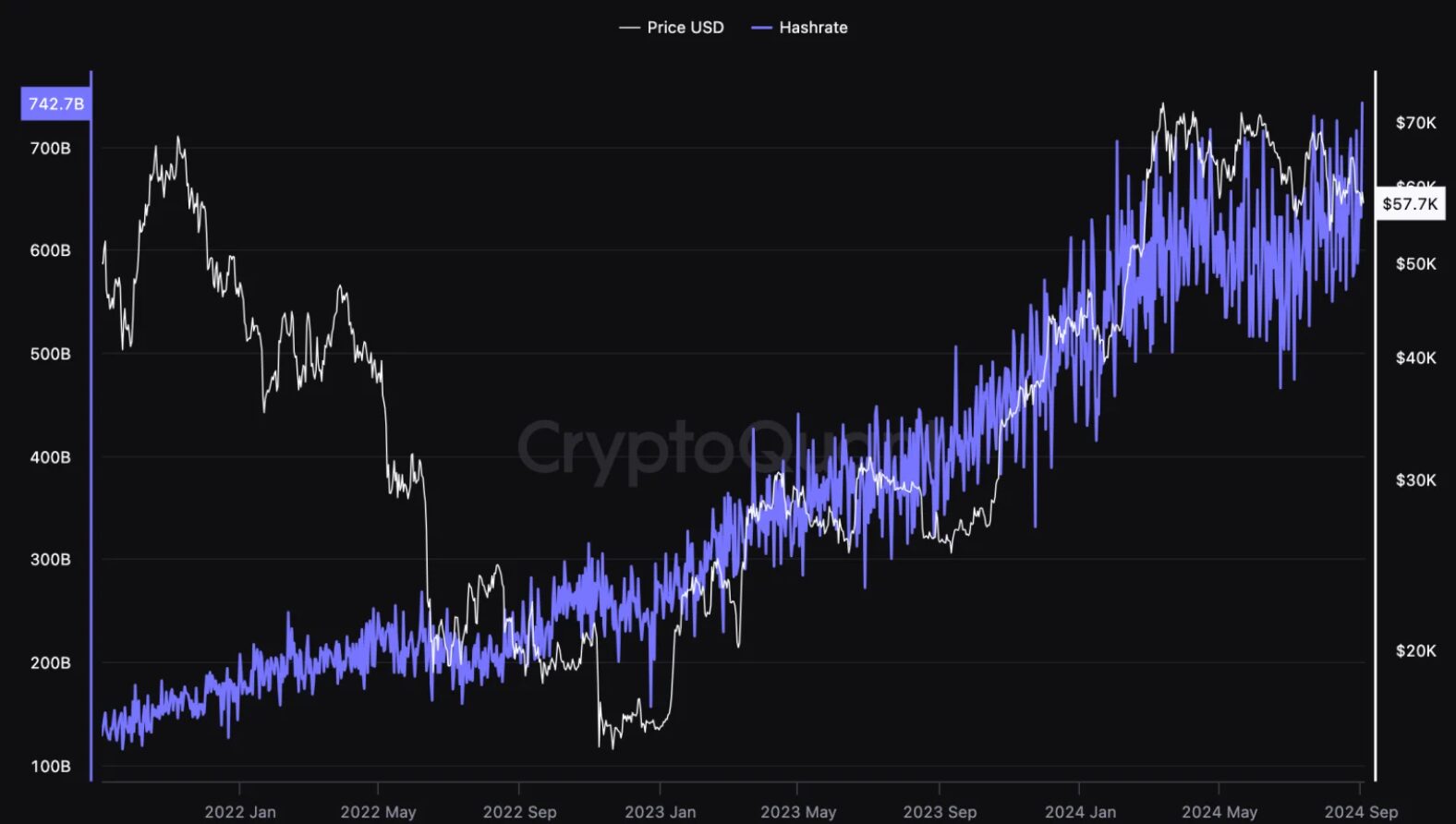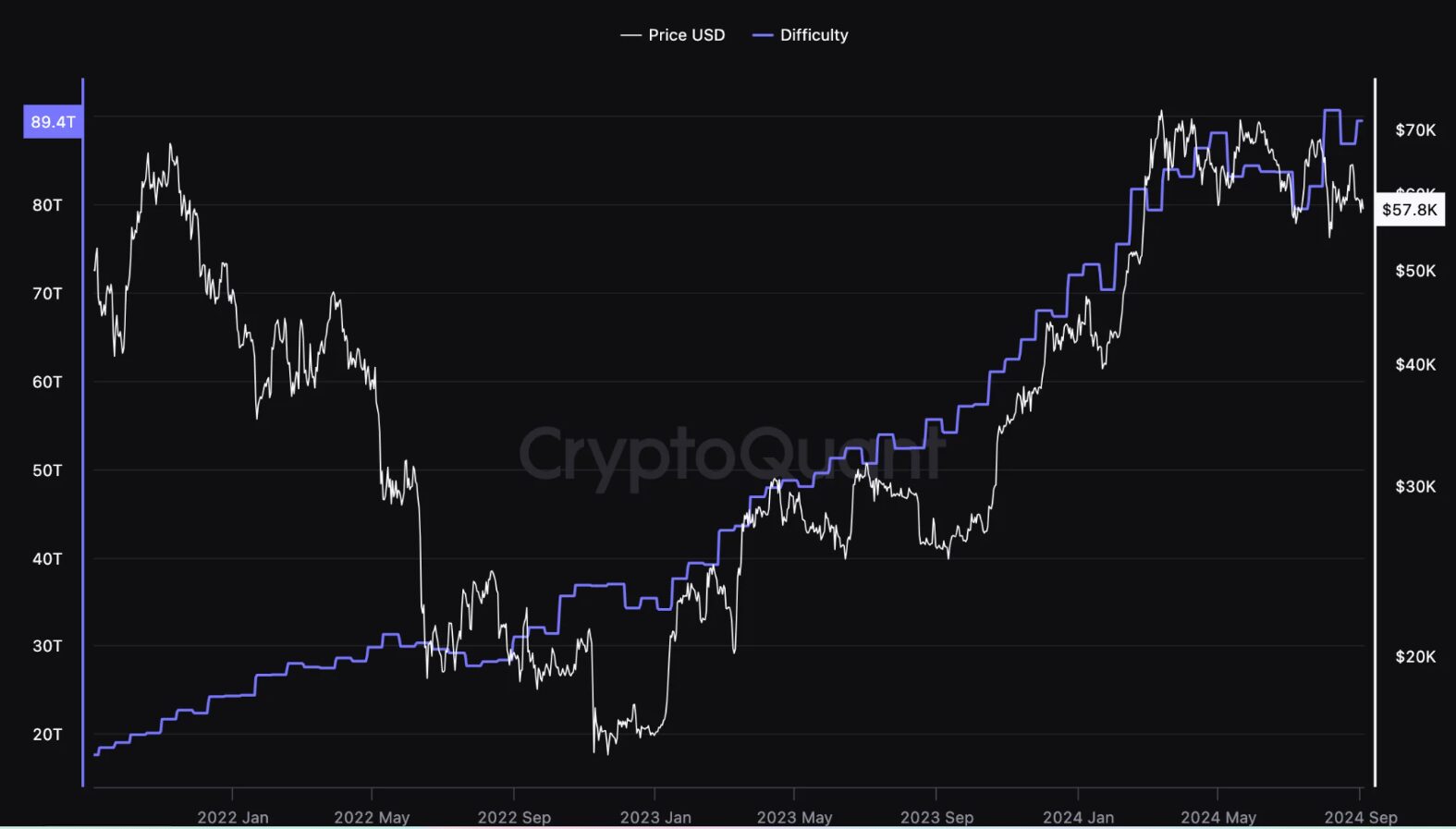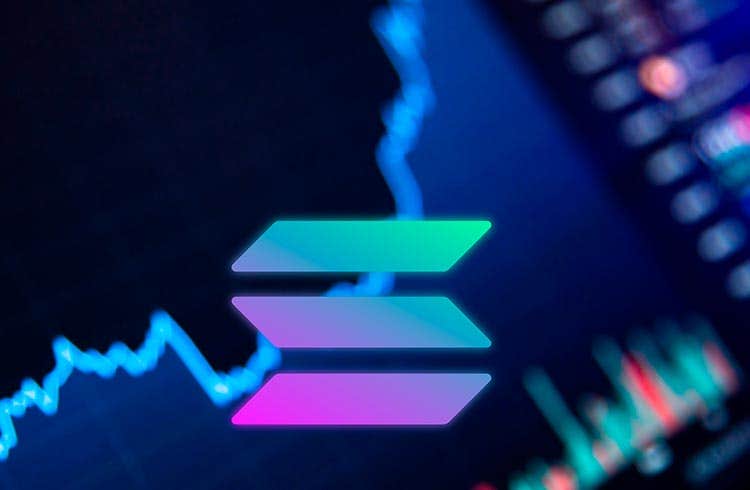On September 1, the Bitcoin network reached a new milestone. The hash rate, which is an indication of the computing power used to secure the network, reached an impressive 742 exahashes per second (EH/s).
This significant growth is the result of a trend observed since 2021, driven mainly by the adoption of state-of-the-art mining hardware, such as application-specific integrated circuits, better known as ASICs.
With the increasing hash rate, mining BTC has become an even greater challenge. As a result, miners need to invest in more advanced equipment and expand their operations, in addition to consuming more energy. All of this in order to remain competitive in this increasingly competitive market.
Bitcoin network hash rate 2021-2024. Source: CryptoQuant
Miners diversify operations to combat high hash rate
In August 2024, the Bitcoin mining sector recorded one of its worst performances in terms of revenue since September 2023, with earnings falling to a low of 827.56 million USD.
The delicate financial situation faced by miners was even commented on in a report by JP Morgan. The document points out that, in addition to the increase in energy costs, miners are also suffering from the reduction in the block subsidy, which has strongly impacted their sources of revenue.
Among the top five mining companies analyzed in the report, MARA and Riot Platforms drew attention for their high operating costs per BTC mined. These are around 55,700 USD and 62,000 USD, respectively.
Bitcoin Mining Difficulty 2021-2024. Source: CryptoQuant
With these high expenses and falling revenues, mining companies are being forced to look for alternatives to remain competitive and profitable. To deal with these challenges, some of these companies have chosen to change their fundraising strategies.
For example, some companies are switching from issuing corporate debt to offering equity to investors, all to avoid a high debt-to-equity ratio.
Others, in turn, are diversifying their operations, expanding into areas such as artificial intelligence and high-performance computing, redirecting part of their computing capacity and infrastructure to data processing centers, as a way to compensate for losses in revenue from BTC mining.
Combating mining costs with clean energy
Furthermore, the company MARA, formerly known as Marathon Digital, is looking for sustainable alternatives to face the difficulties in the cryptocurrency mining sector.
As part of its strategy to remain competitive, the company has been testing technologies that convert methane gas generated in landfills into electricity, harnessing this resource to generate usable energy.
Additionally, MARA recently entered into a partnership with the Government of Kenya to collaborate on the development of the country’s renewable energy infrastructure.
Above all, this agreement reinforces the company’s tendency to direct its operations towards sustainable energy sources, which may indicate that it intends to increase the use of clean energy in the future.
- Trillionaire Fund: We expect several countries to adopt Bitcoin - January 2, 2025
- Analyst predicts “Grand Finale” for Altcoins in early 2025 - January 2, 2025
- Dutch crypto analyst: “This is the right time to buy XRP” - January 2, 2025



















![Best Platforms for Copy Trading in [current_date format=Y] 24 Best Platforms for Copy Trading](https://cryptheory.org/wp-content/uploads/2024/12/copy-trading-120x86.jpg)







